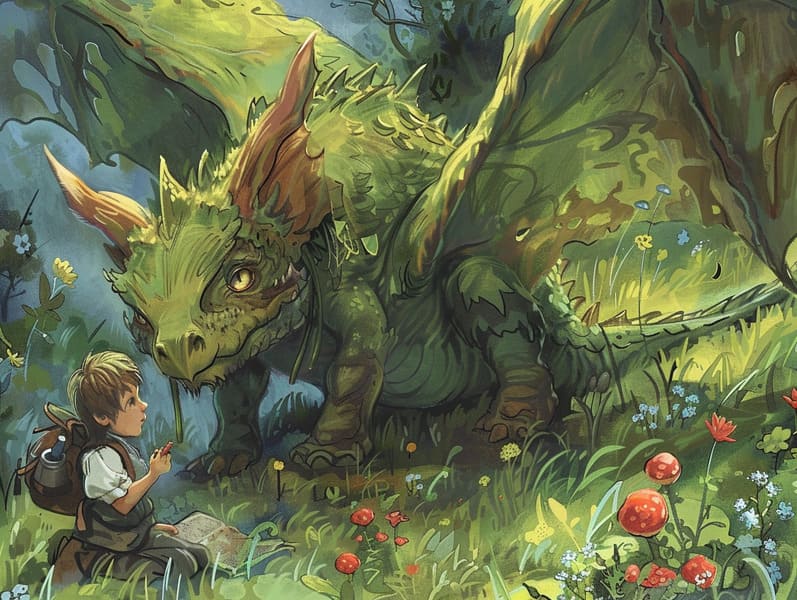
Children's fairy tales have deep roots. These tales have been spoken from one generation to the next far before they were ever transcribed. They were born from a variety of societies, including Western traditions. They were initially narrated among adults, often carrying themes and messages related to the societal norms and beliefs of the time.
The Brothers Grimm, Jacob and Wilhelm Grimm, were among the first to compile many of these beloved tales. Their anthology, "Grimm's Fairy Stories," included tales like "The Story of Cinderella," "The Story of Hansel and Gretel," and "Snow White," which have since become cornerstones in the world of classic fairy tales. Similarly, Andersen's magical fairy tales, such as "The Mermaid," and "The Ugly Duckling," have won hearts worldwide, ensuring their place in the pantheon of beloved fairy tales.
Despite their ancient origins, these tales remain as important as ever, especially as children's bedtime stories. These delightful tales are now available in various formats, including vibrantly illustrated books, fantastical animations, and internet fairy tales.
Their lasting appeal can be connected to several magical reasons:
Life Lessons: Ancient fairy tales often convey important moral lessons. Narratives like "The Tale of the Boy Who Cried Wolf" teach the virtue of being truthful, while "The Hare and the Tortoise" emphasize the values of tenacity and humility. These narratives offer children clear distinctions between ethical and unethical, helping to shape their moral compass in a mild yet deep way.
Compassion and Insight: Old fairy tales frequently present personalities facing problems and hurdles, provoking young readers to feel with their struggles and applaud their triumphs. For instance, "The Story of Beauty and the Beast" emphasizes the importance of seeing inner beauty to acknowledge the real person of a individual, promoting tenderness and appreciation.
Cultural Knowledge: Many ancient fairy tales are infused with the cultural contexts from which they arose. Engaging with these stories can provide enlightening views into different historical contexts, advancing a sense of cultural appreciation and recognition.
Creativity and Imagination: The fantasy-filled elements in classic fairy tales—supernatural elements—activate children’s inventiveness. These narratives move readers to fantasy realms, awakening fantasy ideas and a sense of astonishment that remains a lifetime.
Ancient fairy tales are not only fascinating but also teaching. They act as captivating tools in fostering various cognitive and emotional skills in children. When traditional fairy tales are spoken, they develop communication skills by presenting new lexicon and sophisticated sentence structures. This practice also fosters auditory perception and attention span, as young ones hang on every word, excited to see what happens next.
Furthermore, examining the themes and characters of old fairy tales can promote problem-solving abilities and thought processes. The young are led to spot patterns, guess what will happen, and comprehend cause and effect. These talks also promote little ones communicate their thoughts and feelings, promoting their emotional intelligence.
In today’s high-tech era, the presence of digital fairy tales has made these stories more obtainable than ever. Web platforms and web apps make available extensive collections of Grimm's fairy tales that can be looked at or listened on anytime, anywhere. Fairy tales recited are particularly favored, extending an interactive method for young readers to enjoy these fantastical tales. Spoken stories and read-out-loud videos guide characters and settings to life, often enhanced by charming musical scores and instrumentals that heighten the narrative adventure.
The persistent attraction of traditional fairy tales lies in their ability to modify to modern times while maintaining their underlying messages. Contemporary updates of these narratives often bring in more diverse characters and modern settings, making them relevant to today’s audience. However, the key popular fairy tales with morals lessons of fearlessness, compassion, and fairness remain unchanged, continuing to appeal to kids of all ages.
Old fairy tales also offer a sense of ease and homeliness. They deliver a well-structured narrative with a transparent beginning, middle, and end, often coming to a close with the resolution of conflicts and the triumph of goodness over badness. This reliability can be placating for the young, distributing a sense of solidity in an inconstant world.
Ancient fairy tales continue to bewitch and guide new generations, maintaining their delight and value in modern society. As bedtime stories for kids, they furnish a perfect blend of fascination and comprehension, nurturing moral values, empathy, and creativity. The proliferation of web-based fairy tales and the in demand status of fairy tales spoken validate that these traditional fairy tales remain acquirable to new generations.
By holding onto and releasing these narratives, we continue to exalt the rich tapestry of creativity and cultural heritage. Whether you are exploring a artistically illustrated book, perusing a web-based library, or hearing an voice book, the beauty of old fairy tales is always within reach. These narratives highlight of the everlasting power of storytelling and its ability to unite us across epochs and places.
No matter if you are seeing a richly illustrated book, accessing a web-based library, or listening on an read-aloud book, the fascination of timeless fairy tales is always within reach.
These tales point out of the lasting strength of storytelling and its ability to unite us across epochs and places, weaving a spell that delights and instructs alike.